After a seven-year professional racing career, California’s Olivia Dillon has found a new home on dirt roads. In recent years, Dillon has taken a liking to gravel riding and racing, and this year, she had two impressive results with wins at the Sagan Dirt Fondo and Lost and Found Gravel Grinder.
After winning two of the West Coast’s bigger gravel races, both against impressive fields that included Katerina Nash, does Dillon feel like a gravel “star?”
“That is a hilarious question and statement,” she responded.
Dillon added that she is just enjoying the ride at the competitive NorCal races. “We have a ton of really strong women in NorCal—professionals, retired pros and up-and-coming riders—and the dynamic is awesome and everyone goes out giving it heaps and we all laugh and commiserate afterward.”
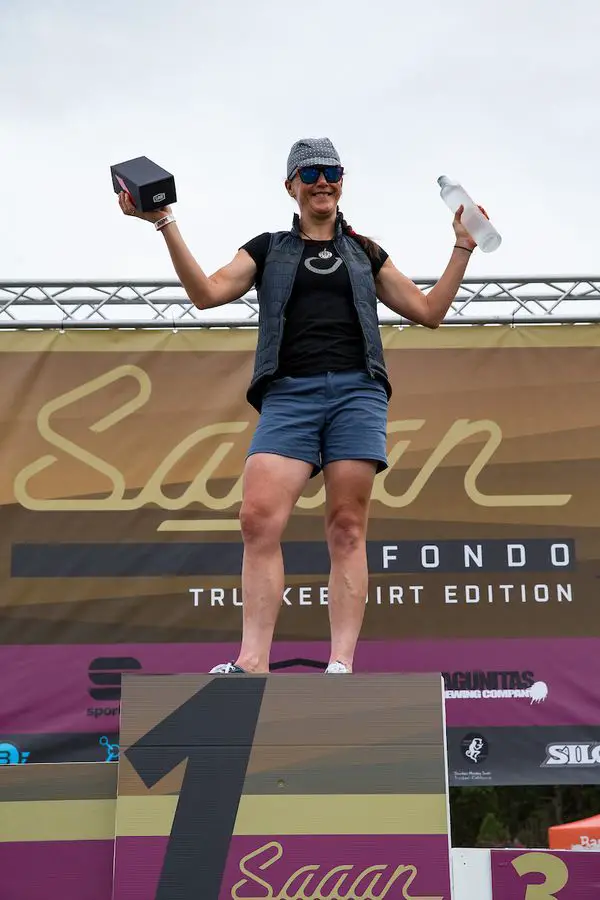
Olivia Dillon took home top honors at the Sagan Dirt Fondo earlier this year. 2018 Sagan Dirt Fondo. © Jonathan Devich / epicimages.us
Dillon, who is a native of Ireland, has joined a growing group of former professionals—including Ted King, Lauren De Crescenzo and Jake Wells, among others—who are turning to gravel as a way to keep the competitive cycling fires burning. “I have always been competitive, so even if I don’t train specifically for races, I do show up on the start line with plenty of fitness, determination and a willingness and need to suffer and get to the finish line as fast as possible,” Dillon said about her approach to gravel.
We reached out to Dillon to ask her about her new gravel “career,” her background as a professional and getting into off-road riding on a 35-pound Raleigh mountain bike (for the record, she has now upgraded to an S-Works Diverge).
Interview with California’s Olivia Dillon About Gravel Racing
Cyclocross Magazine: We covered it a bit in our bike profile, but what’s your background in bike racing?
Olivia Dillon: I raced professionally on the road for about seven years.
CXM: What sports (if any) did you play when you were young and did you have any inkling of your athletic talents at a young age?
OD: I played every sport I possibly could as a kid. Volleyball ended up being my main sport through college and after but soccer, Gaelic football, basketball, athletics, squash, badminton, table tennis, whatever sport was being played, I was playing it.
CXM: How much did your rapid rise from a local San Francisco cycling team to a national title surprise you and others?
OD: My first trip to Irish Nationals, I had no idea what to expect. I was pretty new to racing and did not know what my competitors were like. My first title was in the time trial, and I just went out and rode as fast and hard as possible and won. I’ll never forget someone saying afterward “Well you have certainly thrown the cat among the pigeons.”
Nobody in Ireland knew me at the time since I had been living in the U.S. for a good few years so it was just some “Yank” coming over to give it a go. I didn’t really know what to think but it certainly settled in afterward with getting to wear shamrocks at races.
CXM: How did you get started riding off-road? We saw a photo of one of those first rides.
OD: The first bike I bought was a mountain bike while living in New York City because I didn’t have a clue that if I really wanted to ride in NYC, I should probably have a road bike. So that same mountain bike made its way to San Francisco. I had some teammates who also rode dirt, and they took me out on some local trails and I loved it! However, once I was road racing professionally there was really no time to play with that further, so it wasn’t until a few years later that I really got into it.
When I moved to Fairfax in 2011, I really wanted to explore the trails, so I bought a cheap demo Jamis since someone stole my 35-pound Raleigh when I lived in San Francisco. I had some good friends that took me out and I just loved it.
I was asked to do the Leadville 100 in 2014 with the Herbalife team so that was my first ever mountain bike race and the longest I had ridden on dirt before it was probably 30 to 40 miles. It was an amazing experience even though I crashed pretty on hard on my face on a road section and was knocked out. Somehow I convinced the medics to let me continue, and I finished it with an inoperable front shifter held on with my hand. It was memorable for sure.
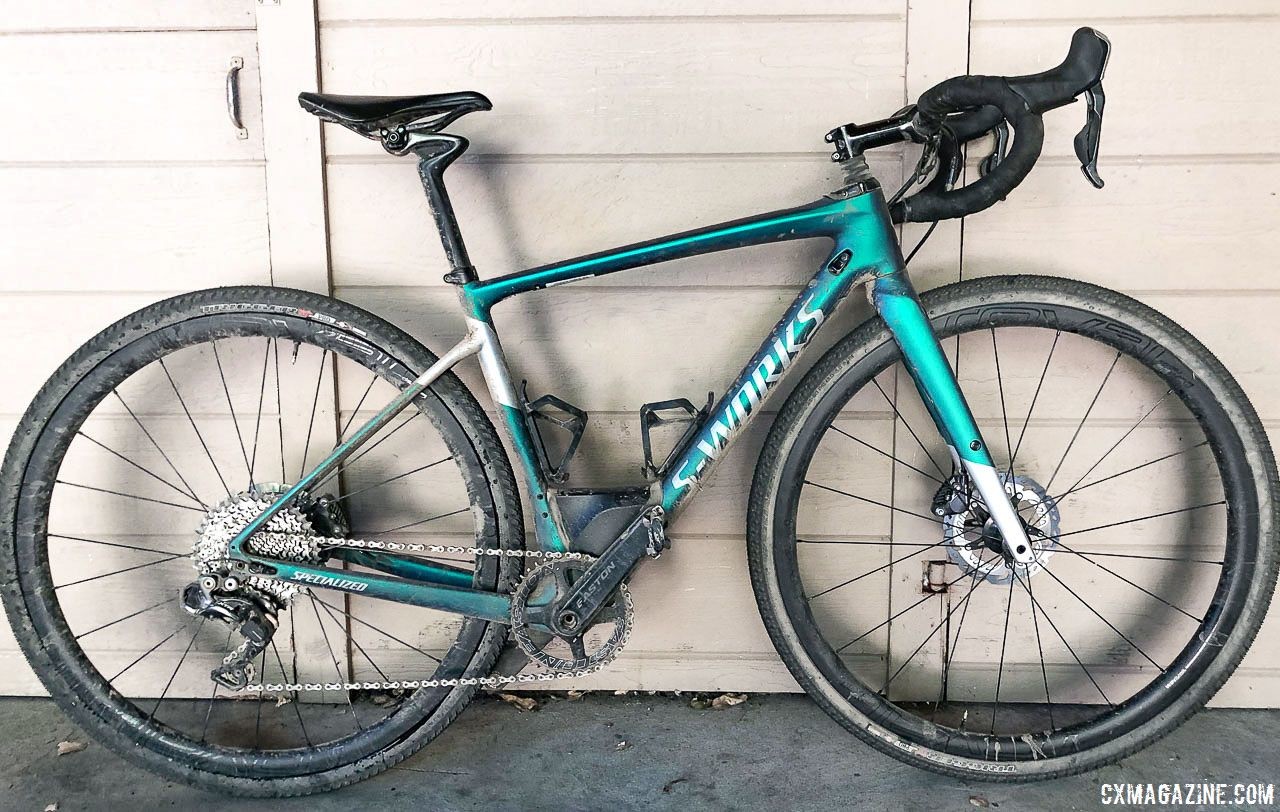
Olivia Dillon has upgraded her ride to an S-Works Diverge. Olivia Dillon’s 2018 Lost and Found winning Specialized S-Works Diverge gravel bike.
CXM: When did you start racing gravel? What bike did you start on?
OD: In NorCal, we are lucky to have the Grasshopper Adventure Series, which are a bunch of mixed terrain races that usually start in January. The first one of the year is Old Caz and it has dirt and road sections. I’m pretty sure doing that in 2015 was my first one. Tayler had bought me a Specialized Crux for my birthday in 2013 when I had my eye on racing cyclocross, so I raced on that. Actually, until this year, every off-road non-mountain-bike race was on the Crux.
CXM: Even with a road background, it seems like you’ve taken to off-road riding quite nicely. What is it about gravel racing that’s appealing to you?
OD: I love being off-road and away from cars. I love how the terrain is so varied and you have to be constantly alert and dodging stuff and finding the best line. You really have to focus on everything and it feels gritty and tough. These races tend to be in such beautiful areas and everyone is stoked to be there. The community aspect is so appealing and everyone is just there to have a good time and enjoy some beers afterward and tell their own personal war stories.
CXM: Do you do anything special to focus your training for gravel? Do you have any tricks that you think have helped you?
OD: To be honest, I don’t train, I just ride my bike. I spent years on training programs and when I retired from professional road cycling I stopped “training.” I ride as much as my schedule allows, so sometimes I can’t with travel and work commitments, so I use those times to rest. Luckily my work is in the industry so it is part of my job to be riding and testing product and out in the community.
In terms of tricks, I think just more and more time on the dirt. It has been fun seeing the big shift in that direction, so much so that we have weekly gravel rides in Fairfax and we discover new routes all the time and new people join the group frequently.
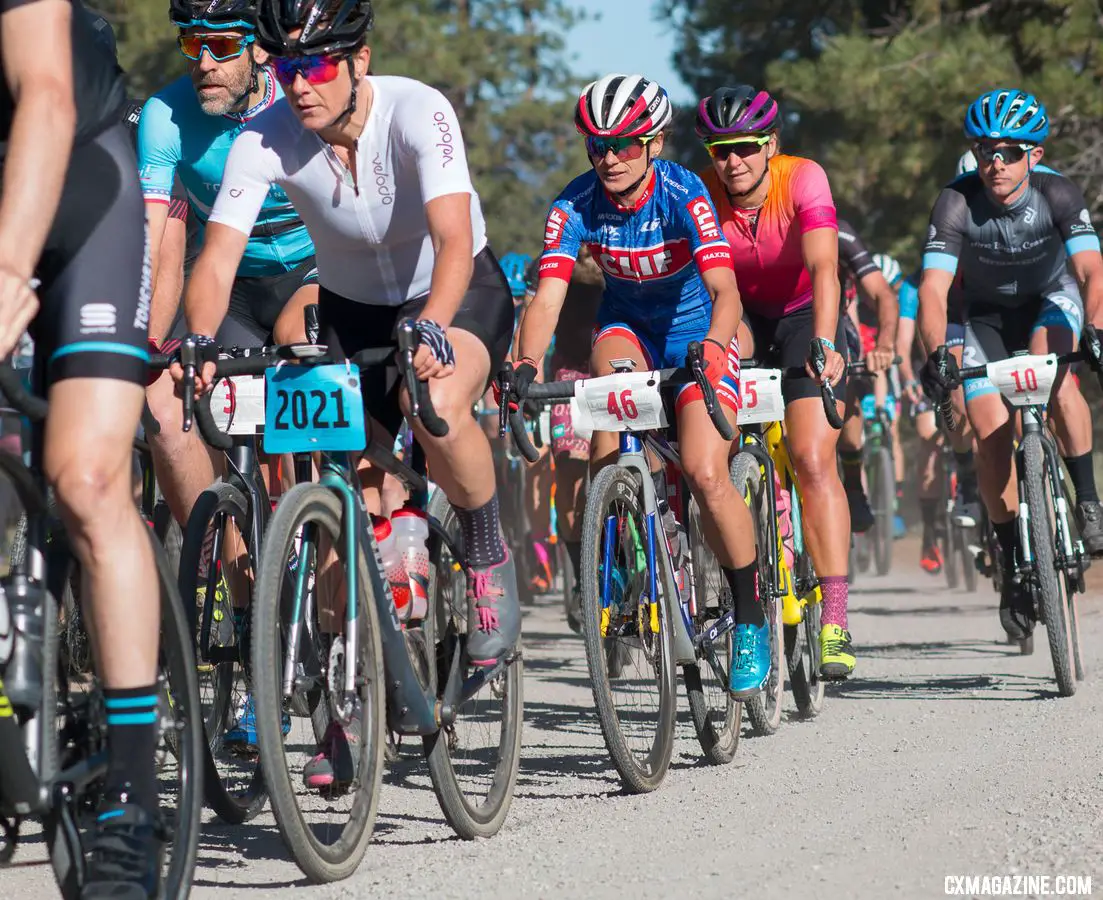
Olivia Dillon #2021 and Katerina Nash, #46 reversed their positions from 2017 both at the start and the finish of the 2018 Lost and Found. © Cyclocross Magazine
CXM: We’ve now covered two wins for you this year (Lost and Found, Sagan Fondo) … How do feel about being a bit of a gravel star?
OD: That is a hilarious question and statement. I have always been competitive, so even if I don’t train specifically for races, I do show up on the start line with plenty of fitness, determination and a willingness and need to suffer and get to the finish line as fast as possible. We have a ton of really strong women in NorCal—professionals, retired pros and up-and-coming riders—and the dynamic is awesome and everyone goes out giving it heaps and we all laugh and commiserate afterward.
CXM: What was it like to race against a legend like Katerina Nash at Lost and Found and the Sagan Fondo?
OD: I have a ton of respect for Katerina as a racer and a human. She is something like a five or six-time Olympian in two sports and absolutely kills it on the world cyclocross and mountain bike stage! We have been going at it for a number of years in all the disciplines. She certainly has the upper hand in cyclocross—not my thing—and in mountain bike where I cannot come anywhere close!
But gravel is different. I feel I am almost better technically on a gravel bike than I am on a mountain bike, and the discipline suits me as a power rider. Both of those races had plenty of climbing but not so much that her climbing prowess would out-race my flat power.
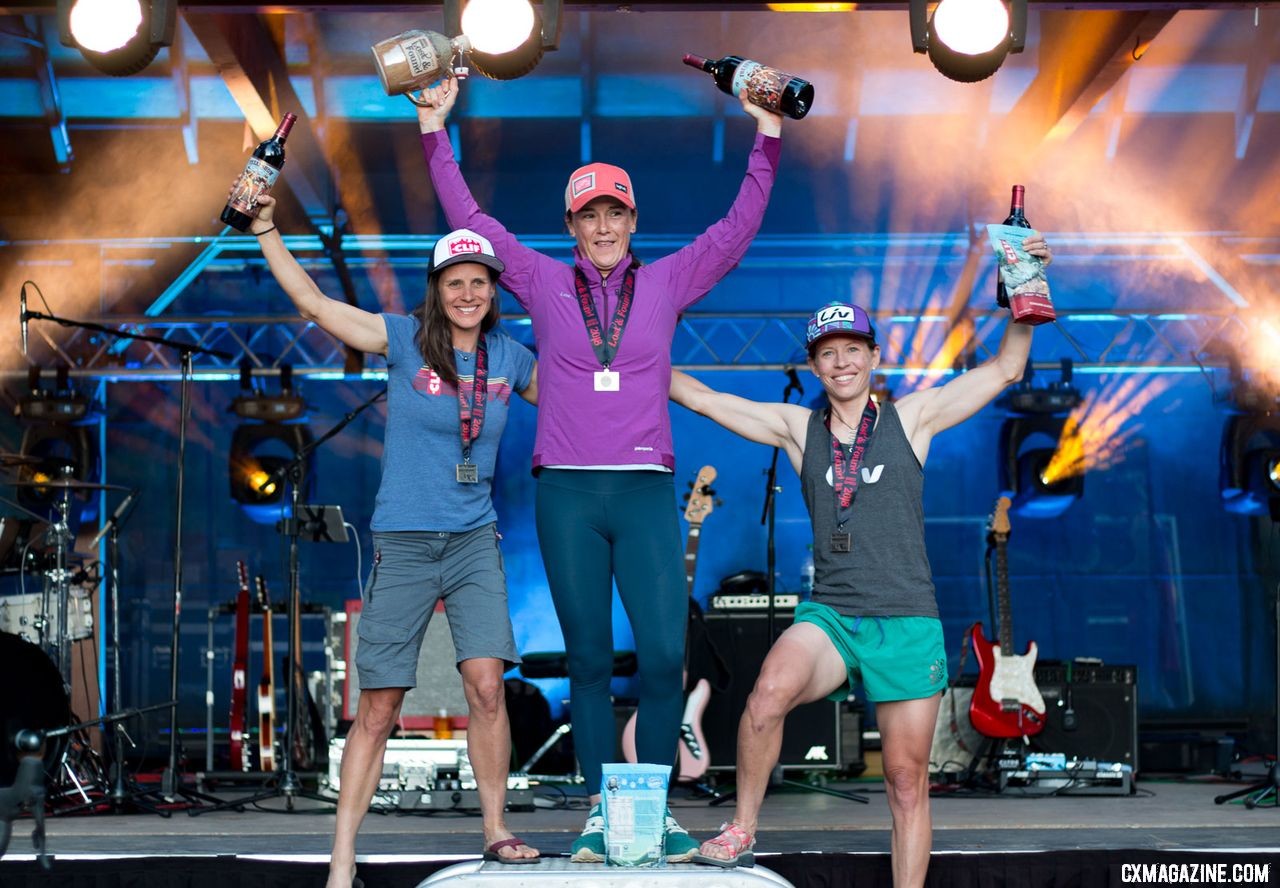
Olivia Dillon survived the battle of the flats to climb to the top step of the Lost and Found podium. In the process, she held off Katerina Nash and Serena Gordon and avoided having to go to an inner tube and mini pump. 2018 Lost and Found gravel race. © Cyclocross Magazine
CXM: We know folks don’t take gravel too seriously, but how big of a goal was it to win the Lost and Found this year after coming close the last two years?
OD: I can’t use the word goal for some reason because that entails training specifically for it. What I would say is, yes, I really wanted to win that race and going into it I knew I was pretty fit and had been at altitude in Mammoth Lakes with Tayler for a couple of weeks, so at least the altitude was not playing against me.
I really do not take it too seriously, but when I decide to line up, I do go all-in on the day.
CXM: Any advice for other women or “roadies” who are gravel-curious but haven’t given it a try yet?
Yes, just get out on the trails. There are plenty everywhere that are road-bike-friendly; just get some bigger volume tires to try it out. There seems to be more and more group gravel rides, so that is a great way to start. Ours in Fairfax are no drop so we all wait and different spots to re-group. What is the most fun is that all of a sudden all of the road rides you did can become so much more interesting and varied by just adding in different sections of dirt. So just even doing that is an easy way to start.
CXM: Kabush hopped from his second at Lost and Found in 2017 to third at the Dirty Kanza 200 this year, while Wicks went the other direction after trying DK once, then landing at Lost and Found and doesn’t have any plans to go back. Is the Dirty Kanza 200 on your radar at all?
OD: Yes it is. To be honest, until this year I was like Meh, does not look all that interesting. I prefer more technical terrain and Lost and Found is just so rad. But this year I paid more attention to it because I knew a lot more people racing and actually read and listened to the stories, so I am finally intrigued by it. My longest ride ever is 140 miles, but I have noticed that as I get older the longer distances really suit me. So yeah, sign me up!
CXM: Looks like you’ve done a few ’cross races in the past. Any chance more cyclocross is part of your dirt racing diet?
OD: No. Yes, I have raced six total, three during one offseason and then three the season I retired. Each one has a good story. And I’m really not very good!
I think the time of year is tough too. It is not really what I want to be doing then. Tayler is on her offseason and not doing a ton of intensity and it’s a time to not be going to races. I love the sport and follow all the badass women racing it and am pumped to watch it, but for now, it is not for me.
CXM: Gravel racing is certainly growing in popularity and attracting pros and former pros, but most events lack prize money. Do you think it should remain like this or is prize money a good step towards trying to make gravel racing a discipline that bike racers could attempt to make a living doing?
OD: I like it when races like Lost and Found benefit the Sierra Butte Trail Stewardship, so entry fees can go to that kind of organization which is giving back and making it possible for all of us to ride those trails.
I think if industry sponsors are seeing the benefits of riders racing these events, then they should pay up to make it viable, which seems to be happening. I don’t think the pressure should be on the promoter to pony up big prize purses, necessarily.
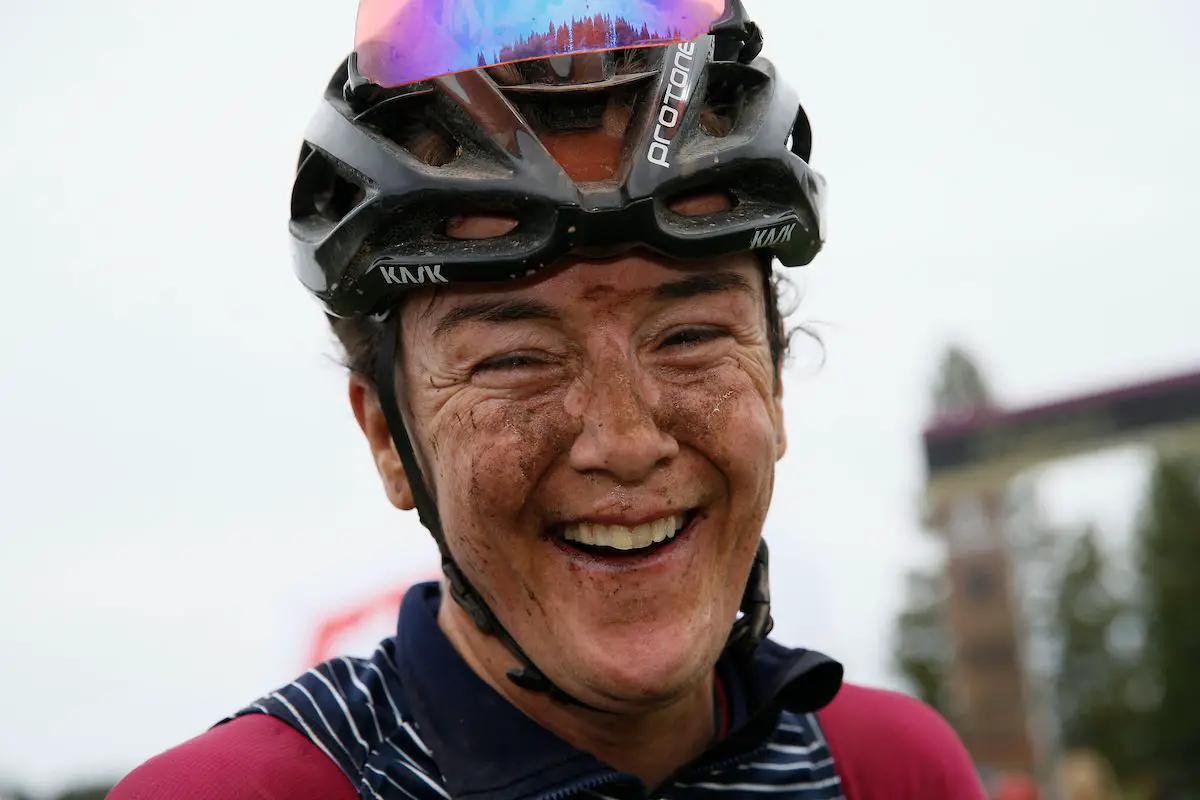
Olivia Dillon took the overall Women’s win ahead of Katerina Nash and others. 2018 Sagan Dirt Fondo. © Jonathan Devich / epicimages.us
CXM: We asked our readers some questions about gravel racing. We’d love to hear your thoughts. First, should aero bars be allowed, banned or left to the organizers’ discretion?
OD: I think they should be banned. Given the mass start nature of these races, it is just not prudent. Plus, add in the gravel and terrain and people are going to be crashing. Plus they make beautiful bikes look ugly!
CXM: Why do you race? Win, do your best, get a challenge and adventure or social ride?
OD: Win, do my best, be challenged and have an adventure. And it is also social.
CXM: How should gravel rules be made? Status quo with “unwritten rules,” uniform rulebook or fewer rules?
OD: Ugh, are we really getting to this point? I watched Rebecca Rusch’s video on the”SHARK Gravel Code,” maybe? That made sense to me. Safe, Honest, Accountable, Responsible, Kind.
CXM: Thanks for your time. Looking forward to seeing you back on the gravel roads next year.
OD: Thank you!



























